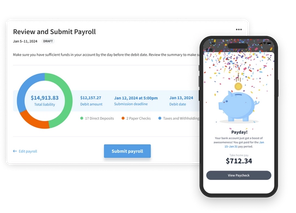
Eddy’s HR Mavericks Encyclopedia
The world's largest free encyclopedia of HR, with 700+ HR articles and podcasts.
Created by Eddy and our HR Mavericks community.
Meet-the-Market Compensation Strategy
Developing a compensation strategy and determining your company’s strategy in the market can seem like an overwhelming process. Our goal is to make it simple and take some of the confusion out of that process as we discuss a “Meet the Market” strategy.
What Is a Meet-the-Market Compensation Strategy?
There are three main compensation strategies: lead-the-market, lag-the-market and meet-the-market. We will be discussing meet the market in this article. Meet the market compensation strategy revolves around doing market research and averaging your workforce’s pay so that it essentially matches the middle of the market. This doesn’t mean that every one of your employees is making the average salary for a particular role. It means that you are averaging that middle point. You will have employees that are making more and employees that are making less. Generally, in a meet the market plan you will offer rapid increases to those who are making less than the middle of the market and then slow down the increase amount to avoid getting too far ahead of the market.
Meet vs Lead vs Lag the Market
The compensation strategies that most companies employ are tied into one of three ideas. In a lead the market strategy, companies target the 75th percentile of a pay range for a particular role. In a lag the market strategy, companies aim for the 25th percentile for a particular role. A meet the market strategy is meeting the 50th percentile.
What Are the Advantages and Disadvantages of a Meet the Market Compensation Strategy?
There are many advantages and disadvantages of a meet the market strategy. We can’t detail all of them, but we will highlight some of the important themes.
Advantages
- You will know that your employees are being paid fairly for their experience and expertise in their particular field and job.
- Your company won’t drag behind the market, but you aren’t paying top dollar either.
Disadvantages
- In competitive fields, such as developers, employees will expect to be paid at a leading price. That means you may struggle finding the talent you are looking for.
- You may not be able to afford other benefits or perks that keep your employees engaged.
How To Know if a Meet the Market Strategy Is Right for Your Organization
A meet the market is a fairly safe bet for your organization, but there are some sure fire ways to know that your organization is ready for a meet the market strategy!
- You offer average to above average benefits. Your benefit options are neither poor nor extraordinary.
- On your engagement survey, pay isn’t consistently in the top 5. If pay does appear in your top 5, you may need to consider pursuing a lead the market strategy.
- You are looking to reduce or minimize your turnover rate. If you are currently seeing high turnover, pay could be a factor. It may be time to look at your strategy. You can learn more about retaining your employees here.
Why You Should Consider Mixing Compensation Strategies
You may have certain roles that you need to lead the market and others that you can lag the market. Just because you choose one compensation strategy doesn’t mean that you are stuck with that strategy. It is highly recommended to mix and match strategies so that you can meet all of your organization's needs.
Topics

Nick Staley
Nick is a certified HR professional holding an SPHR and SHRM-CP. Nick has built HR teams from the ground up as well as worked for big corporations. Nick enjoys consulting and training those who are just getting started in HR. When not working, he enjoys spending time with his family.
Frequently asked questions
Other Related Terms
Eddy’s HR Mavericks Encyclopedia
Meet-the-Market Compensation Strategy
Developing a compensation strategy and determining your company’s strategy in the market can seem like an overwhelming process. Our goal is to make it simple and take some of the confusion out of that process as we discuss a “Meet the Market” strategy.
What Is a Meet-the-Market Compensation Strategy?
There are three main compensation strategies: lead-the-market, lag-the-market and meet-the-market. We will be discussing meet the market in this article. Meet the market compensation strategy revolves around doing market research and averaging your workforce’s pay so that it essentially matches the middle of the market. This doesn’t mean that every one of your employees is making the average salary for a particular role. It means that you are averaging that middle point. You will have employees that are making more and employees that are making less. Generally, in a meet the market plan you will offer rapid increases to those who are making less than the middle of the market and then slow down the increase amount to avoid getting too far ahead of the market.
Meet vs Lead vs Lag the Market
The compensation strategies that most companies employ are tied into one of three ideas. In a lead the market strategy, companies target the 75th percentile of a pay range for a particular role. In a lag the market strategy, companies aim for the 25th percentile for a particular role. A meet the market strategy is meeting the 50th percentile.
What Are the Advantages and Disadvantages of a Meet the Market Compensation Strategy?
There are many advantages and disadvantages of a meet the market strategy. We can’t detail all of them, but we will highlight some of the important themes.
Advantages
- You will know that your employees are being paid fairly for their experience and expertise in their particular field and job.
- Your company won’t drag behind the market, but you aren’t paying top dollar either.
Disadvantages
- In competitive fields, such as developers, employees will expect to be paid at a leading price. That means you may struggle finding the talent you are looking for.
- You may not be able to afford other benefits or perks that keep your employees engaged.
How To Know if a Meet the Market Strategy Is Right for Your Organization
A meet the market is a fairly safe bet for your organization, but there are some sure fire ways to know that your organization is ready for a meet the market strategy!
- You offer average to above average benefits. Your benefit options are neither poor nor extraordinary.
- On your engagement survey, pay isn’t consistently in the top 5. If pay does appear in your top 5, you may need to consider pursuing a lead the market strategy.
- You are looking to reduce or minimize your turnover rate. If you are currently seeing high turnover, pay could be a factor. It may be time to look at your strategy. You can learn more about retaining your employees here.
Why You Should Consider Mixing Compensation Strategies
You may have certain roles that you need to lead the market and others that you can lag the market. Just because you choose one compensation strategy doesn’t mean that you are stuck with that strategy. It is highly recommended to mix and match strategies so that you can meet all of your organization's needs.
Topics

Nick Staley
Nick is a certified HR professional holding an SPHR and SHRM-CP. Nick has built HR teams from the ground up as well as worked for big corporations. Nick enjoys consulting and training those who are just getting started in HR. When not working, he enjoys spending time with his family.
Frequently asked questions
Other Related Terms
Eddy's HR Newsletter
Sign up for our email newsletter for helpful HR advice and ideas.


